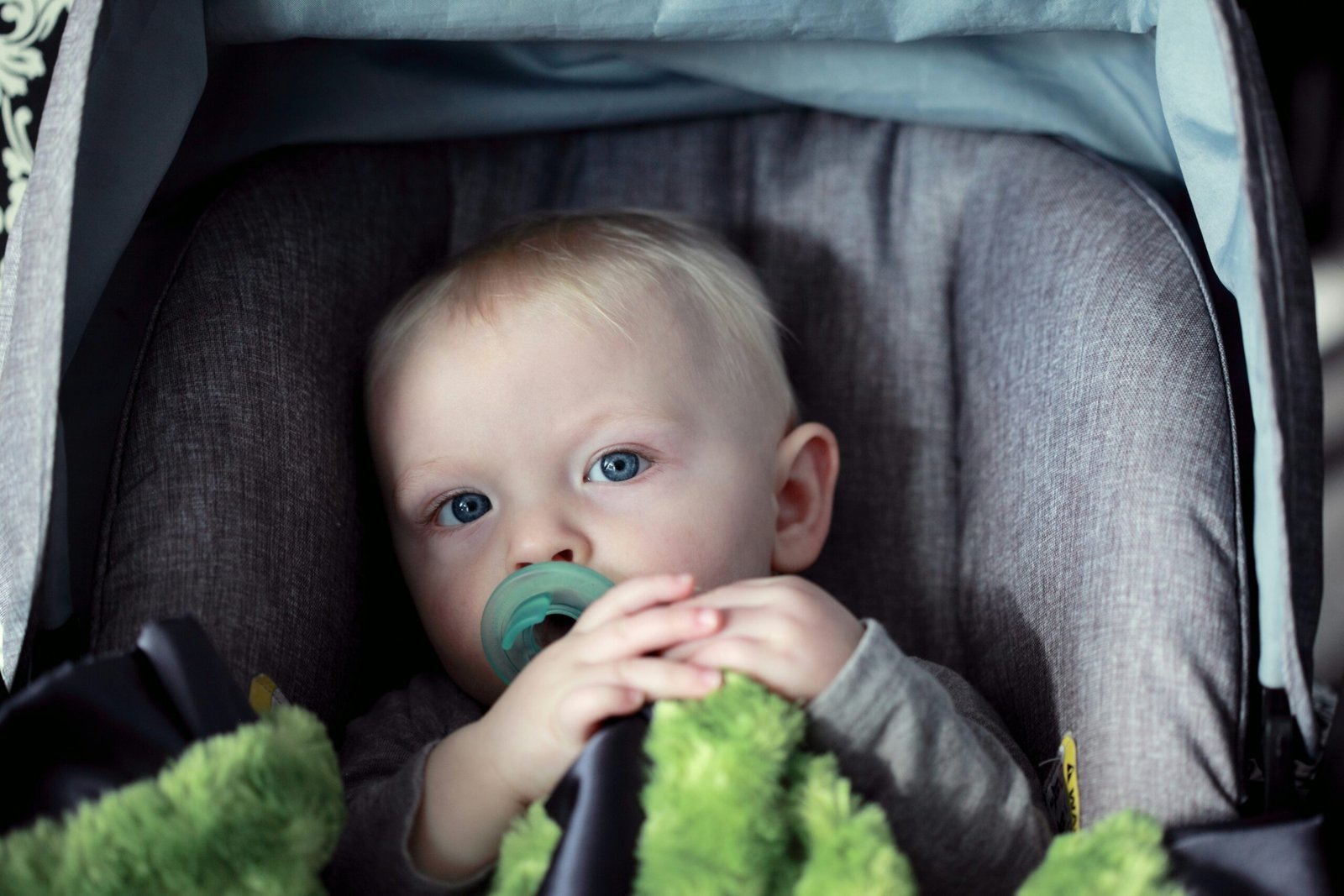
1. Bottle Cleaner and Sanitizer
As a parent, ensuring that your newborn feeding equipment is clean and safe is paramount. With a plethora of options available, selecting the right baby bottle cleaner and sanitizer can be overwhelming. This guide will help you make an informed decision to keep your baby healthy and happy.
Babies have developing immune systems, making them more susceptible to infections. Proper cleaning and sanitizing of baby bottles prevent the growth of harmful bacteria, viruses, and fungi. Even if you are breastfeeding, you may use bottles for pumped milk or formula, so having the right cleaning and sanitizing routine is essential.
Steam Sterilizers: These use steam to kill 99.9% of harmful germs without the need for chemicals. They come in electric or microwave versions. Electric sterilizers often have a larger capacity and more features, while microwave ones are more compact and portable.
UV Sterilizers: These use ultraviolet light to eliminate bacteria and viruses. They are effective and can sanitize multiple items at once, including bottles, pacifiers, and toys.
Chemical Sterilizers: These involve using sterilizing tablets or solutions. They are convenient for travel but ensure that they are thoroughly rinsed off to avoid any chemical residue.
Choosing the right baby bottle cleaner and sanitizer involves considering factors like safety, effectiveness, and ease of use. By selecting products that meet your family’s needs and preferences, you can ensure that your baby’s feeding equipment remains clean and safe, giving you peace of mind. Investing time in selecting the right products and establishing a consistent cleaning routine will contribute significantly to your baby’s health and well-being.
We went with the Phillips Avent Bottle Sterilizer & Dryer. It dried the bottles very well with just 1 cycle. The top basket is removeable, so it made loading it easier. After a while, we got tired of cleaning bottles, so we ended up getting the Baby Brezza Bottle Washer Pro. I wouldn’t say that the unit was life changing, but it did make life easier. You do have to play a little bit of Tetris in order to get everything to fit. If you’re using wide neck bottles you can forget about washing the caps in the same cycle. The dryer is not the best. Water does build up on the bottles, so you need to pause the dry cycle 30 mins in and get rid of the water if you want to dry the bottles completely on the first cycle.
We felt that seam sterilizers were the safest option for us. We didn’t find much information back UV, and chemical sterilizers are a nightmare for overthinkers like me. I didn’t want to wake up in the middle of the night wondering whether or not I washed off all the chemicals from the bottle.
2. Comfortable Nursing Pillow
A comfortable nursing pillow is an essential item for both new mothers and their newborns. It plays a crucial role in facilitating a successful and comfortable breastfeeding experience. The primary function of a nursing pillow is to help position the baby correctly for proper latching, which is critical for effective feeding and minimizing discomfort for both the baby and the mother. Proper latching reduces the risk of breastfeeding challenges such as sore nipples and engorgement.
Additionally, a well-designed nursing pillow helps alleviate strain on the mother’s back, neck, and arms. Breastfeeding can be a demanding activity, often requiring mothers to maintain specific positions for extended periods. Without adequate support, this can lead to muscle fatigue and long-term discomfort. Nursing pillows are crafted to provide optimal support, allowing mothers to sustain comfortable nursing positions with reduced physical strain.
There are various types of nursing pillows available, each designed to cater to different needs and preferences. Some pillows are engineered to wrap around the waist, providing a stable platform that cradles the baby and keeps them securely positioned. Others are designed with extra support features, such as elevated edges or firm padding, to enhance comfort and convenience. Selecting the right type of nursing pillow depends on several factors, including personal comfort and the specific needs of the baby.
When choosing a nursing pillow, it is essential to consider factors such as firmness, shape, and material. A pillow with the right firmness can offer adequate support without feeling too rigid, while the shape should complement the mother’s body type and preferred nursing position. Additionally, the material of the pillow should be soft, breathable, and easy to clean, ensuring both hygiene and comfort during use. Machine-washable covers or waterproof layers can be particularly useful features.
We went with the Boppy Organic Nursing Pillow, but we ended up leaving it at the Airbnb we were staying at for July 4th. We then ordered the Original Nursing Pillow because it had better ratings on Amazon. That is at least what we tell ourselves. We honestly didn’t want to spend the extra $30. We figured that we always have a cover on it anyways. Does he really need organic fibers? We didn’t realize that the organic one was actually firmer and provided more support. So, now we are just waiting for our next trip to “accidentally” forget it. Also, the boppy is a God send when it comes to tummy time.
3. Bottles and Nipples for Easy Transition
Choosing the right bottles and nipples is crucial for ensuring a smooth transition between breastfeeding and bottle-feeding. The right selection can help prevent issues like nipple confusion and feed refusal. There are various materials to consider when selecting bottles. Plastic bottles are lightweight and shatterproof, making them convenient for daily use. However, they may retain odors and need to be replaced more frequently. Glass bottles are durable and free from harmful chemicals, though they tend to be heavier and can break if dropped. Silicone bottles offer a flexible, lightweight option that is also chemical-free and easy to clean.
In addition to material, bottle design significantly impacts feeding efficacy and ease. Wide-neck bottles mimic the shape of a mother’s breast, helping babies who switch between breastfeeding and bottle-feeding. Angled bottles are designed to reduce air intake, which can lessen the likelihood of gas and colic. Anti-colic bottles feature special venting systems that help minimize air bubbles and reduce digestive discomfort.
Nipple choice is equally important and should be tailored to the baby’s age and feeding needs. Nipple flow rates vary, with options often indicated by age ranges. For newborns, a slow-flow nipple is recommended to prevent choking and mimicked breastfeeding’s natural pace. As the baby grows, medium and fast-flow nipples can be introduced to meet their increasing feeding demands. Selecting a nipple made from durable materials like silicone ensures longevity and safety, as silicone is less likely to crack and harbor bacteria.
Maintaining hygiene is paramount in bottle-feeding. Regular sterilization can be achieved using boiling water, steam sterilizers, or microwave sterilizing bags. Properly drying all components before reassembly helps maintain cleanliness and readiness for the next feeding session.
Our favorite bottle would have to be the Phillips Advent anti-colic from 0-1 month and the Natural Response after that. We’ve found that the natural response nipples were a bit too difficult for our newborn to get a proper flow from. The anti-colic bottles had a nice flow, but once our son got his sucking down the Natural Response was less messy. The runner up bottle would be the Herobility Bottles. They seem to be somewhat underrated, but they keep your baby very clean. We haven’t had too much leakage from them besides the small leak from our son’s mouth, but that doesn’t have anything to do with the bottle. It has more to do with the fact that he likes to store milk in his mouth.
4. Burp Cloths and Bibs
Burp cloths and bibs play an essential role in managing spills, spit-ups, and keeping your baby clean during feeding sessions. These items form a critical part of your daily routine, ensuring that both the wearer and the caregiver remain relatively stain-free. A substantial supply of absorbent burp cloths and bibs is indispensable for maintaining hygiene and comfort. The market offers various types of materials, such as cotton, muslin, and bamboo, each with its distinct advantages and disadvantages.
Cotton burp cloths and bibs are highly favored for their excellent absorptive capacity and durability. Cotton fabric is adept at soaking up significant amounts of liquid, making it an ideal choice for heavy spit-ups. These items are generally machine washable, simplifying their maintenance. However, cotton can become coarse after numerous washes, and the frequent laundering may lead to wear and tear over time.
Muslin burp cloths and bibs, on the other hand, are known for their lightweight and breathable qualities. Muslin is a finely-woven, sheer fabric that remains soft and gentle on the baby’s skin, even after multiple washes. However, its lightweight nature means it might not handle heavy spills as efficiently as cotton.
Bamboo burp cloths and bibs are gaining popularity due to their exceptional softness and eco-friendly attributes. Bamboo fabric is naturally hypoallergenic and moisture-wicking, making it a great option for newborns with sensitive skin. Nevertheless, these items tend to be on the pricier side and may require more delicate care during laundering.
When selecting burp cloths and bibs, prioritize options that are both durable and easy to clean. Opt for fabrics that can withstand frequent washing without losing their softness or absorptive qualities. Consider having at least 10-12 burp cloths and an equal number of bibs on hand. This quantity ensures that you have sufficient clean items available, even on days when laundry is not immediately possible, thereby making the feeding process smoother and more convenient.
We went with the Mukin Natural Cotton Cloths. They are very soft and have held up very well. We’ve washed them probably 100 times, and they don’t show signs of wear. They come in 12″x12″ which is perfect for traveling with. They have a convenient little tab, so you can hook them to dry. If you’re at home. We would recommend getting the 20″x10″ Muslin Burp Cloths. If you’re a new parent just take our word for it. If you’re not new parent, then you already know.
5. Bottle Warmer
A bottle warmer can significantly simplify the feeding process for new parents by providing a quick and consistent way to heat breast milk or formula to the optimal temperature, ensuring a stress-free experience for both the caregiver and the newborn. There are various types of bottle warmers available, each offering unique benefits to suit different needs and preferences.
Traditional steam-based bottle warmers are widely used for their efficiency in heating milk quickly. They utilize steam heat to warm the bottle, which generally takes a few minutes. On the other hand, water-bath warmers provide a gentler approach, using warm water to gradually bring the bottle to the desired temperature, potentially reducing the risk of overheating.
When selecting a bottle warmer, several key features should be taken into consideration. Portability is crucial for parents who are frequently on the move. A compact, lightweight warmer is essential for travel or visits outside the home. Additionally, ease of use is paramount; straightforward controls and clear indicators can save precious time and avoid frustration. Compatibility with different bottle sizes and shapes is another important factor, ensuring that the warmer can accommodate whichever brand you choose for your baby.
Safety is a top priority when using a bottle warmer. To ensure the baby’s milk is always at a safe temperature, regularly check the bottle’s temperature before feeding. It’s advisable to follow the manufacturer’s instructions to prevent overheating, which could degrade the nutrients in breast milk or formula. Moreover, always inspect the warmer for signs of wear or malfunction and keep it clean to prevent any contamination.
Choosing the right bottle warmer is essential. You don’t want a bottle warmer that takes forever when your baby is crying. The longer it takes the louder the cries. 60 seconds can feel like a lifetime as you’re waiting for the bottle to warm up. The Phillips Avent Bottle Warmer is the best one we’ve tried. The Grownsy Bottle Warmer was second. It looks nicer, but it didn’t warm the bottle as fast. It could have taken 30 seconds longer, but 30 seconds is a lifetime when waiting for your baby’s bottle to warm up.



